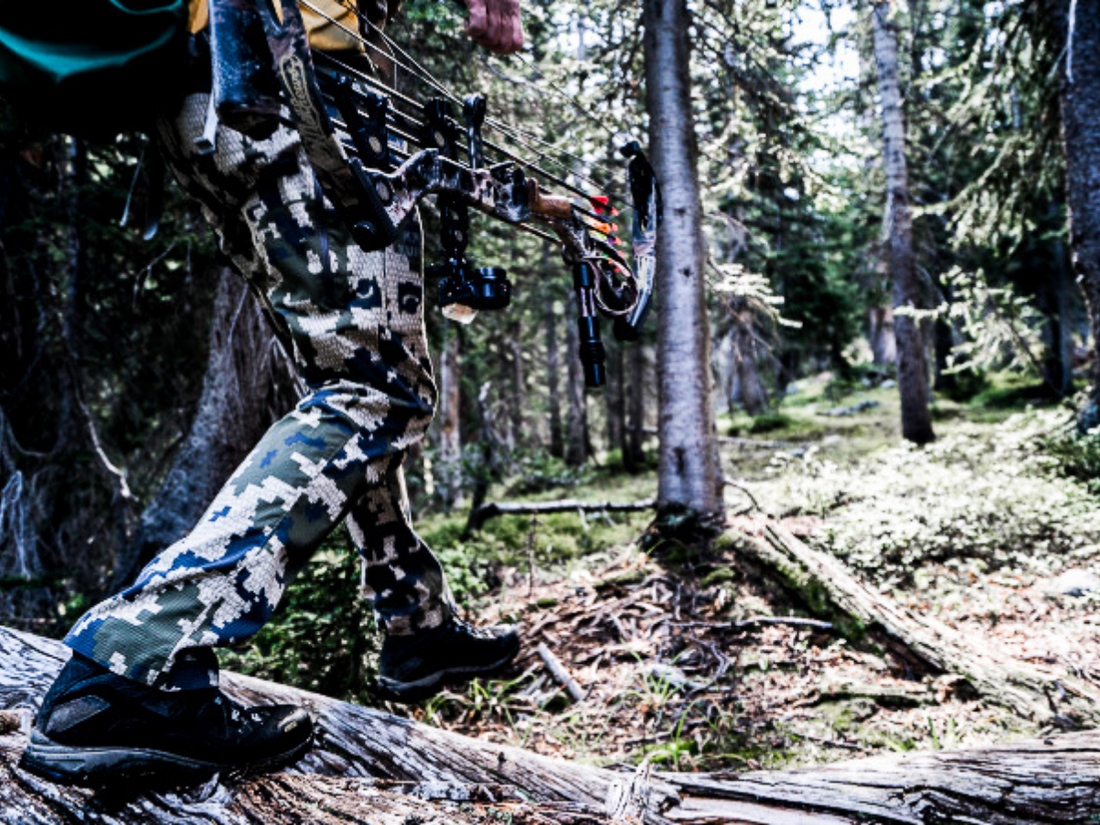By Matt Gibble
The average person or hiker would never have a reason to head into dark timber. It reminds me of forbidden areas of forests, scenes from fairy tales, big bad wolves, the boundary where the hero or heroine is told "never to go." This means that later on, a climactic event will play out in that dark timber.
Many a hiking trail will go through dark timber on the north side of a mountain. On a trail, it is beautiful, serene, usually cool, and offers a hint of mysteriousness. I've walked those trails and initially I tend to enjoy them, but I am always glad to come out to a vista, some sunlight and bigger views.
Animals prefer dark timber. It provides sanctuary and a place where they can rest, often during the day. In the heat of summer, they seek it out as nature's "air conditioning." In the hours surrounding dawn and dusk, ungulates use trail systems that take them to and from feeding areas.

When I enter dark timber, I attempt to move more slowly, especially during a hunt. But even in the off-season I move with intention, preferring to stick to the more heavily used game trails or areas where I will not make a lot of noise.
There is a wealth of information to be gained in the timber. Bedding areas become evident and the game trails often lead in an out of smaller parks where animals might feed during the daytime. Some areas might be so thick with downed timber that one wonders how a multi hundred pound animal navigates through such a challenge. A small bench provides an area where there is just enough room for an elk to bed down, quite often with a perfect view of the area below him, offering him an escape plan if he sees an intruder.
Areas that hold water from storms are popular as well. These bogs became places where cows and calves will frolic and play, running in circles and kicking up their heels in delight in the midst of a heavy summer rainstorm. Approaching the end of summer, the bull elk will lie down in these wallows, muddying themselves as they prepare for September's rut or mating season.
Thinking about venturing into dark timber causes me to pause, to reflect. Why do I want to go in there? Will I move slowly enough to gather good information or get close to an animal? As a human, without proper patience, if I move too quickly I may only hear a crash as the ghost of an elk disappears leaving me with only "what ifs?" and wonderings.
In dark timber, my senses become heightened. I scan for horizontal lines, the flick of an ear. The slightest noise causes me to stop, a foot barely touching the ground. Do I sense a stick under my foot? If I put my 170 pounds of pressure on that stick will it cause a sound that will echo like a building falling?

Now, I think I hear something! I stop, it is definitely an animal moving through the timber. I strain to see, to gather more light in this darkness, to discern between shadows and filtered sunlight that strains to reach the forest floor. Suddenly there is a loud chatter and scolding that comes from the dreaded pine squirrel, a rodent similar in size to a chipmunk, that declares himself the obnoxious sentry of the forest. Many a pine squirrel has caught the sneer of a hunter in the dark timber.
Under its heavy canopy is also a breeding ground for mushrooms. During the monsoon season in summer, a forager could fill a backpack with mushrooms from the dark timber. Just this year, I gathered my first mushrooms, some Hawk's Wings that filled my small pack. Upon verification that they were indeed safe to eat, they provided two meals for my family.
If one sits on a ridge top and scans an opposing hillside with either the naked eye or through binoculars, he can get a good picture of what happens on that hillside, especially during dawn or dusk. It is truly the big picture of the mountainside or aspen grove.
But with dark timber, it is more challenging to get that big picture. I have a favorite area that I frequent. While on a map it is not the largest of areas, it is large enough that I am always trying to gain a better understanding of its nooks and crannies, its secret places, the holdings behind large boulders or thick trees. You cannot see what lies beneath the canopy of the dark timber by looking at Google Earth. Only by venturing in on foot, can one begin to unravel the mysteries and life that makes its home in dark timber. The small side of the mountain, miles from trailheads, that I have frequented for the last three years becomes more familiar to me each time I venture forth. Yet, each time I leave, I realize how much I do not know about the area, and I am always called back to find new stories and adventures behind the curtain at its edges.

